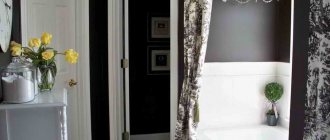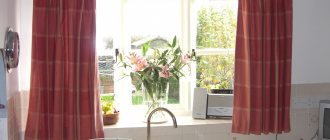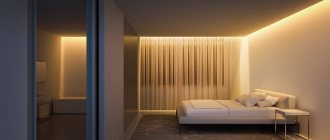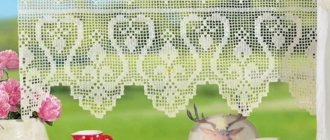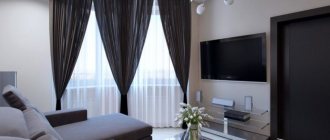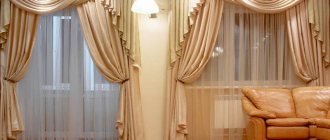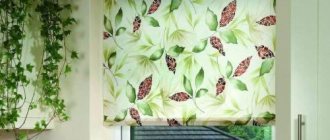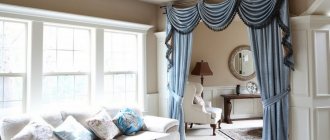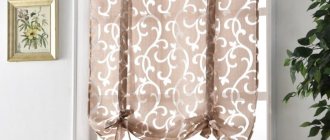Curtains in the interior of the room
Gone are the days when curtains were used only to block out bright sunlight. Today textile products are simply irreplaceable in the design of any interior. This type of decor can not only change the visual perception of space, but also give the room a completely new look. It is very important to choose the right curtains. In most cases, it is this type of decor that plays a key role in the interior of the entire room. Many designers have recently advised not to stop at classic options, but, on the contrary, to try to use the most unexpected solutions in window design. This can be easily done by sewing custom curtains. But if financial resources do not allow you to use such a service, you can design the curtains yourself. In order to accomplish this, it is necessary to use special methods. Elements such as lambrequins, tiebacks, and fringe for curtains are ideal.
How to attach?
First of all, decide on the location of the fringe on the curtain. The standard option is to trim the bottom edge; you can also sew fringe along the side edge of the curtains, but this is applicable for curtains made of thick fabrics - light textiles will sag under the weight of the trim, which will negatively affect the visual appeal of the curtains.
To sew fringe to the curtain you will need an overlocker, threads matching the color of the braid and scissors. If you don’t have a sewing machine, we recommend taking the curtain to a sewing studio, since using hand stitches you won’t be able to secure the braid correctly; it will pull the curtains and unnatural folds will form on the fabric.
The following master class will help you sew fringe onto curtains correctly:
- We process the lower contour of the curtain using an overlocker so that the fabric does not fray during use;
- If the decorative braid has a side seam, we burn the cut with a lighter, this way we will prevent the fringe from unraveling after sewing;
Processing the edge of the fringe
- Turn the curtain inside out and place the tape under the fabric. We make a longitudinal stitch along the entire length of the panel; if the braid is wide, we lay two lines at a distance of 3-5 mm. from the edges of the tape;
We make a longitudinal stitch from the wrong side
- We place a stitch on the front of the curtain along the upper contour of the braid;
Front stitching
- We bend the side sections of the fringe to the wrong side of the fabric and fix them with two longitudinal lines;
We bend the side sections of the fringe and fix them
When attaching the tape in this way, the sewing machine presses the tape into the fabric, as a result of which the textile itself stretches and after sewing there are no folds or protruding areas left on it. By following the instructions you will get a clean fixation, without the slightest visual defects.
Related Article: Fixing a Hole in a Drywall Wall
Fixation without the slightest defect
When finishing the panel with fringe along the bottom and side contours, you will encounter difficulties in fixing the braid on the corner cut of the fabric. It is important here not to stretch the textile so that after sewing, constrictions do not form on it.
Finish the stitch along the first contour of the fabric 5 mm short. to the edge.
End the stitch 5mm short. to the edge.
Next, raise the machine foot, turn the fabric 900 and stitch along the side contour.
Raise the machine foot, turn the fabric 900 and stitch along the side contour
After fixing the braid on the wrong side of the fabric, make a stitch on the front part of the product, evenly distributing the fringe and giving it the desired shape.
Front stitching
After sewing, iron the curtain from the wrong side to straighten the fabric.
Curtain styles
First you need to decide on the style of curtains. There are several different types of textiles: classic, modern, neoclassicism, eclecticism, minimalism, gothic and other options. When choosing curtains, you should consider the style of the entire room. They should not be the brightest and most expressive part of the interior. It is necessary to design the window so that it fits harmoniously into the overall picture and complements the appearance of the room. Having decided on the direction, you can begin draping the curtains. One of the most unusual ways to decorate textiles is fringe. It is not only easy to use, but also gives an extraordinary look to the most unexpected design solutions. This decorative decoration is widely used in almost all styles. Most often, fringe is sewn to the bottom and sides of the product, but decorators often experiment by covering most of the panel with braid. This product looks richer if the decor is used with a shimmer.
Choosing a fringe
When choosing material for decoration, focus on the curtain fabric; accessories for curtains and windows should not only look beautiful, but also emphasize the positive aspects of textiles. When sewing panels yourself, it is rational to simultaneously buy fringe and fabric for their manufacture, so you will immediately be convinced of the compatibility of specific combinations.
For light fabrics - organza, silk, satin and chiffon, fringe with beads for curtains is suitable. This is a weightless, elegant product, the price of which depends on the material used to make the beads: plastic fittings are a budget solution, more expensive beads are made of glass beads, the most luxurious are beads made of natural crystal, they shimmer under the rays of the sun and create the impression of real precious stones.
When decorating heavy fabrics - jacquard, velvet, velor, use a massive finish. Fringes with pom-poms for curtains or products with voluminous tassels are appropriate here; due to their weight, they tighten the curtain and prevent the appearance of unevenness and folds on the panels.
WATCH VIDEO INSTRUCTIONS
Fringe with pom-poms is a great addition to laconic Roman blinds and windowsill-length curtains. Fringed curtain balls will make the window decoration cozy and add a touch of naivety, which is especially appropriate in country-style kitchens and children's rooms.
Pay attention to the combination of finishing color and panel shade. Contrasting combinations look advantageous - gold fringe for curtains and emerald or blue curtains. To decorate light tulle curtains, fringe with glass beads is suitable for curtains; however, it is not necessary to choose transparent beads imitating precious stones; the brighter the fittings, the more interesting the composition looks.
Vertical curtains can be successfully complemented by using a curtain braid - a decoration in the form of a cord with a tassel, used as tiebacks for gathering closed panels. Braid is an integral feature of classic design and interiors made in oriental style.
Related article: Connecting the washbasin and bathtub drain to the sewer system
Pay attention to the compositions in which the lambrequin is decorated with fringe, and the curtain panels are left without decorative trim - this is a calm and elegant combination that is relevant not only in living rooms, but also in bedrooms and work rooms.
Braid as a type of drapery
Fringe for curtains is a special braid with various tassels and laces attached to it. This material is so specific that it can be applied to a wide variety of products: curtains, curtains, to decorate lambrequins and tiebacks. Even the lightest fabrics from which curtains are made can be decorated with braid. Fringe for textiles is made from a variety of materials: natural, synthetic, mixed. This decoration has several types: it can be tinsel, cut, fan and block fringe. Decorating this braid with beads, beads and rhinestones is encouraged. Decorating is not necessary, but it should be taken into account that fringe plays a key role in the basic look of curtains. It is very important that the color palette of such decor is rich in its shades. Thanks to this, you can safely play with the design. Brushes can also be decorated, and, if necessary, made yourself. Fringe, curtain tassels, hand-made tiebacks will give the entire product a unique look and unique style.
General recommendations
In order to achieve maximum success as a result of decorating textiles, it is necessary to carefully consider all stages of its finishing. For example, it is not at all necessary to use braid of the same color as the curtains. The combination of several shades will only add more piquancy to your product. Fringe for curtains can be the most unexpected color. This will not only emphasize the unusual image of the room, but also add a touch of luxury.
Curtains with fringe always look advantageous. In addition, its use helps give the room a rich and festive look. This decoration option is very often used in the design of furniture, pillows, tablecloths, poufs. This is done to give the finished look to the room. Sewing on the braid yourself is not an easy task. Such work requires a lot of attention and accuracy. After all, a carelessly sewn ribbon will ruin the appearance of not only the textiles, but also the entire design of the room. The braid must be sewn on the wrong side.
Decorating curtains with your own hands is very simple. After all, there are no specific rules for the design of textile products in the world. This means that you can completely bring any, even the most unexpected, idea to life. A little imagination - and you will get unique curtains with fringe. Their photos can easily show off in the best design magazines. You can always turn to a designer for help, but you can only create the room of your dreams with your own hands!
Features of fringe
Fringe is a textile ribbon, the lower contour of which is lined with decorative elements in the form of lush fabric threads or pendants made of glass or plastic. Such products were previously used to decorate heavy curtains, since they had a lot of weight, under which light fabrics sagged and lost their drapery, but with the spread of synthetic materials in the textile industry, light decorative braids began to be produced to decorate airy curtains made of organza, chiffon, and silk.
Fringe
There are the following types of fringe for curtains:
- Cut-out products in which the braid is decorated with a strip of fluffed fabric threads;
- Block braid for finishing curtains, consisting of several segments of different colors. Gradient (with a smooth transition of shades of similar tones) or contrast (sharp transition of opposite shades) palettes are used;
- Tinsel braid for curtains with tassels made of collected fabric threads, in the upper part of which there are beads made of glass beads, chrome-plated metal or wooden fittings;
- Fan - figured products with a wavy or cascading shape, decorated with festoon patterns.
Article on the topic: Carpet in the living room - 100 photos of fashionable design 2019
The classic version of fringe is a textile braid with a lush edge made of fluffed threads, but there are products consisting of separate ropes on which decorative accessories are attached - imitation rhinestones, bugle beads, steel figurines, feathers.
Such decor can be used not only to decorate curtains, but also for lambrequins, tiebacks, or for finishing upholstered furniture, pillows, bedspreads and fabric tablecloths.

